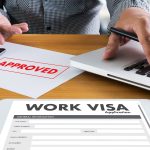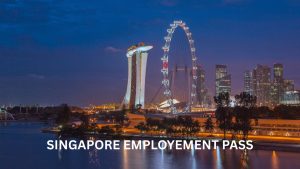Table of Contents
Introduction
It is always exciting to hire someone new in your company from abroad. They bring fresh ideas and new energy to the team.
But the part many employers don’t think about enough is the work permit process. It looks like a small formality, but a single error in the process can cost your company thousands and cause legal trouble for you.
Governments are also paying closer attention now. In the U.S. and Canada, the rules keep getting stricter about employing foreign workers, and the fines keep going up if you don’t follow the proper guidelines.
This means companies cannot overlook these details now. That is why understanding work permits is so important.
A work permit keeps your business protected. You just need to know how it works and what your role is. Let’s move ahead and understand it in a better way.
What is a Work Permit?
A work permit is an official permission for a foreign worker to have a job legally. They cannot work without a work permit. If they are found doing work, the employer could get fined or even lose the right to hire foreign workers later.
In the U.S., this permission comes as an Employment Authorisation Document. It’s an ID card with the worker’s name, photo, and the time period they’re allowed to work.
In Canada, work permits are linked to the Labour Market Impact Assessment, or LMIA. This means the job and the employer get approved before the worker even starts.
A work permit also states some rules. It says who the worker can work for and how long they can stay.
But these rules are not the same everywhere. They change depending on the country and the worker’s case. That is why it is important for employers to know the rules and follow them.
Also Read: Steps to Work with a Study Abroad Consultant Effectively
Types of Work Permits
There are two main types of work permits you need to know about:
Employer-Specific Work Permit
- This kind of work permit ties the worker to just one company. They can’t go and work for anyone else.
- Take Canada, for example: many LMIA-based permits are employer-specific. That means the worker can only work for the employer who got approved in the LMIA.
- This type of permit works well if you need someone for a fixed or long-term role.
- As the employer, you also get more control because the worker is bound to you for that specific job and place. You don’t have to worry about them leaving for another company.
- The application process can take a bit longer since it needs extra approval before they can actually start.
Open Work Permit
- An open work permit lets the worker choose who they want to work for, as long as the job is allowed under the rules.
- In Canada, spouses of skilled workers often get these permits so they can work while living there, too.
- But now the rules are tighter, and only certain skilled jobs (TEER 0–3) qualify.
- The big thing about open permits is freedom. Workers can switch jobs without filling out new applications every time.
- For employers, this means you have less control as employees can leave for another job anytime they want to.
Why this matters for employers
- If you hire someone with an open permit, you need to keep in mind that they can switch jobs whenever they want.
- Employer-specific permits give you control, but you have to manage the paperwork carefully and wait for approvals.
Employer Responsibilities
Having a work permit for a foreign worker doesn’t mean you’re done. There are a few important things you need to do to stay legal and avoid fines.
Check and Verify Documents
- In the U.S., you have to fill out Form I-9 for every new employee. Do this within three business days of their start date.
- If your company uses E-Verify, you can now check the documents remotely in many states. This helps if your worker isn’t in the office on the first day.
Follow Job Posting Rules
- In Canada, you need to post the job on Job Bank for at least four weeks before hiring someone from outside the country.
- You also have to show that you tried to hire a Canadian first. This is part of proving you really need a foreign worker.
Keep Track of Expiry Dates
- Work permits have expiration dates. You have to know them and reverify before they expire.
- A simple internal system or spreadsheet can help you keep track of everything.
Compliance Risks and Penalties
If you don’t follow the rules for work permits, you can face many penalties. This can happen if you make mistakes in the paperwork or hire someone without the right permit.
You could also face audits and even lose permission to hire foreign workers. And this is not a good thing, as this can harm your company’s reputation.
The penalties regarding this are different in every country. Each country has its own rules. For example, in the U.S., the fines look like this:
| Violation | Penalty Range (U.S.) |
| Hiring an unauthorised worker | $716 – $28,619 per worker |
| Failing to complete Form I-9 | $272 – $2,701 per form |
| Document fraud violations | $5,000 – $6,000 per worker |
In Canada, the rules are different. It can include losing your right to hire through the Temporary Foreign Worker Program altogether.
The thing to remember here is that keeping track of work permits is much cheaper than paying these fines later.
The Future of Work Permits
The rules regarding work permits are getting stricter. Governments everywhere are tightening the process to make sure only the right people get approved. In the future, you can expect:
- Higher Fees: You can expect the costs of the application to go up. Countries are raising processing fees to cover better systems and more checks.
- More Checks, Longer Waits: Officers will ask for extra proof and may take longer to review cases. That means you’ll need to plan so hiring isn’t delayed.
- Digital Systems: Paper forms are slowly being replaced by online portals and digital verification. This is faster in the long run, but it can feel confusing at first.
Also Read: 7 Benefits of Using Study Abroad Consultants
Conclusion
Work permits may seem like extra work at first, but they protect your business. You can hire foreign workers easily if you know the rules well and follow the steps as I mentioned.
I suggest you set up a basic system to check documents and track expiry dates of the work permits. If you do this, you will be able to avoid delays later in the application process.
Also, remember that rules keep changing, so keep checking all the new updates. When you follow the right process, you’ll be able to hire people from abroad without worrying about legal issues.







